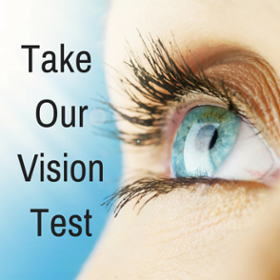Have You Suffered From A Stroke Or Other Neurological Brain Damage That Might Have Resulted In A Visual Disorder?
 To carry out normal daily tasks, such as finding an object at home or on a supermarket shelf, you need to make effective eye movements. Unfortunately, in addition to a visual field loss, normal eye movements are often also affected after brain injury and increase the problems of performing visually guided daily activities. Specific training is needed for you to learn to make effective use of your eye movement again.
To carry out normal daily tasks, such as finding an object at home or on a supermarket shelf, you need to make effective eye movements. Unfortunately, in addition to a visual field loss, normal eye movements are often also affected after brain injury and increase the problems of performing visually guided daily activities. Specific training is needed for you to learn to make effective use of your eye movement again.
NeuroEyeCoach Is Based On Several Decades Of Scientific Research And Has Specifically Been Developed To Help You.
NeuroEyeCoach’s rehabilitation claims are based on the findings of numerous empirical studies and validated in a peer-reviewed clinical study published in Reed Elsevier’s Cortex, which demonstrated significant improvements in visual search.
- This study is largest ever published eye movement training study.
- Clinical results point to strong efficacy of NeuroEyeCoach, with 87% improvements in search time and 80% of patients making fewer errors.
This high-profile study confirms that NeuroEyeCoach leads to meaningful improvement in visual search performance, resulting in improvements in navigation skills and object finding.
- Increases the efficiency of a patient’s eye movement and re-train the patients’ ability to make the most of their remaining vision.
- Performed in comfort at home on patient’s own computer; the program is intuitive and user-friendly.
- The program has been designed not to be overly demanding and is can be quickly completed in 2-4 weeks.
- Designed to have a real positive impact on activities of daily living.
The training makes use of a well-established psychological paradigm called the Visual Search Task. During a training session, the patient is asked to search a computer screen and decide if a particular item is present amongst distractor items. The level of difficulty is systematically altered by changing the target positions, the number of distractors, and similarity between the search for the target and distractors. NeuroEyeCoach is self-adaptive and adjusts the task difficulty to the patient’s deficits while encouraging eye movement efficiency.
The program has 12 levels of difficulty that can be completed in a minimum of 36 sessions, each taking around 15-20 minutes. The pre- and post-therapy evaluation options within the program enable the clinicians and patients to quantify the effect of therapy.
NeuroEyeCoach is provided by NovaVision in a therapy suite with its Vision Restoration Therapy (VRT) and also on its own. VRT addresses the restoration of lost vision and NeuroEyeCoach addresses patients’ difficulties with eye movements and their ability to integrate visual information. While VRT helps to recover visual functions and enlarge the visual field, NeuroEyeCoach enables the patient to make the most of their remaining vision; the two therapies therefore complement each other and are provided in one therapy suite to maximize patient benefit.

